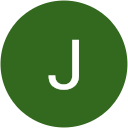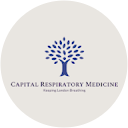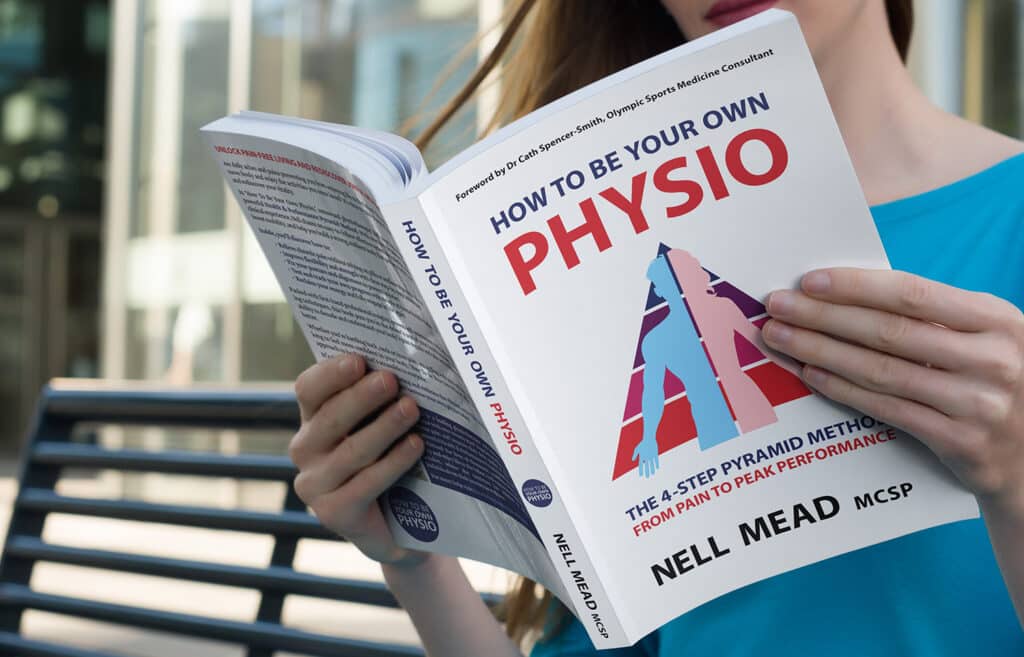Neck pain is often one of the scariest issues people can experience. We all know how important the neck is, and we’ve all heard stories of people who break their necks and end up paralysed – which for most of us is a terrifying thought. That makes neck pain a really emotive issue. Your neck is also really close to your ears, so any sort of clicking and grinding in your neck sounds super loud (to you!) compared to any clicking or grinding in your ankle.
Neck pain is also extremely common, so it’s fortunate that the vast majority of neck problems are not dangerous, even though they may be very painful. Today I want to discuss neck issues and how I look at them within my neck physiotherapy practice.
Let’s start with the anatomy
Neck bones:
- The neck has seven vertebral (spinal) bones, called the cervical vertebrae (“cervical” means “of the neck”) and numbered 1 to 7 from the top. You’ll her them referred to as C1 to C7, because “the first cervical vertebra” is a bit of a mouthful.
- The top two vertebrae, C1 and C2, are quite differently shaped than the rest of the vertebrae. All the other vertebrae have vertebral bodies (the weightbearing part) and spinous processes (the knobble at the back that’s visible on especially slim people) but the C1, also known as the “atlas”, has neither of these features. Instead, it’s build more like a ring of bone with lumps (“lateral masses”) at the sides. The occiput bone (base of the skull) sits on the lateral masses, with the spinal cord passing through the ring; and the lateral masses sit on the corresponding facets of the C2 vertebra, known as the “axis”. Uniquely, there is no disc between C1 and C2.
- The hole in the atlas is actually separated into two parts by a ligament called, imaginatively, the transverse ligament of the atlas. This separates the back part of the hole (where the spinal cord runs) from the front part of the hole. The axis has a bony spike, called the dens, which pokes up through the front part of the hole, giving the atlantoaxial joint extra bony stability.
- Below C2, the vertebrae are shaped a bit more like those in the rest of the spine, with a rubbery disc cushioning the space between each pair of vertebrae at the front, and facet joints maintaining stability at the back.
Neck ligaments:
- There are six major ligaments which hold the bones together. Four of them are present all the way down the spine: the anterior and posterior longitudinal ligaments which run down the front and back of the vertebral bodies; the ligamentum flavum which connects adjacent laminae (the bit of bone between the spinous process at the back, and the transverse process at the side of each vertebra); and the interspinous ligament which connects adjacent spinous processes all the way down the spine.
- Then there are two ligaments which are specific to the neck: the ligamentum nuchae, which sits over the interspinous ligament, connecting the tips of the spinous processes; and the transverse ligament of the atlas, which helps to stabilise the atlas on the dens of the axis.
Neck nerves:
- The spinal cord runs down the spinal canal which is enclosed by the vertebrae. Between the vertebrae, at the level of the discs, are intervertebral foramina, or gaps between the bones, where the spinal nerves exit the spinal cord – one on each side, at each level. These split into motor nerves which tell the muscles when to contract and relax (in the neck, these nerves supply the muscles of the head, neck, arms and diaphragm) and sensory nerves which supply the skin.
Neck blood vessels:
- There are also some fairly significant blood vessels, which include: the carotid arteries which supply the brain, eyes and forehead (internal carotid) and the scalp (external carotid); the vertebral arteries which supply the brain; and the jugular veins which are responsible for the venous drainage of the head and neck.
- Also involved in drainage is the lymphatic system whose function is to drain tissue fluid, plasma proteins and other cellular debris back into the blood stream, and which is also involved in immune defence. There are lots of lymph nodes and vessels in and around the neck.
Neck muscles:
- Finally, the muscles. As with pretty much every other area of the body, there are muscles that are designed to stabilise the neck and prevent excessive, unwanted movement; and there are muscles that are designed to move the neck. Some of them attach the neck to the skull, and others attach the neck to the shoulder, upper back and chest.
- Some of the key muscles when it comes to neck pain are the suboccipital muscles which attach the base of the skull to the top of the neck; the scalene muscles which attach the neck to the first and second ribs; the sternocleidomastoids which run from the mastoid processes of the skull to the collarbone and sternum; and the deep neck flexor group of muscles which run along the front of the vertebral bodies and attach the skull to the front of the spine.
Why is it important? Red flags
One of the main functions of your neck is to move and hold your head in the right place for whatever activity you want to do. That could be twisting so that you can look over one shoulder; it could be craning to see over a wall; it could be staring down at your mobile phone; it could be bracing to head a football; it could be headbanging in time with your favourite heavy metal band; it could be positioning your nose to smell a flower, or placing your mouth to receive a spoonful of soup without spilling it down your white top! Your neck should be able to help you achieve all of these activities (and many more!) without difficulty or discomfort.
The neck is also the guardian of the top of the spinal cord. Of particular importance here is protecting the 3rd, 4th and 5th cervical nerves, which join to form the phrenic nerve which supplies the diaphragm. If your diaphragm doesn’t work because you have a spinal cord injury at or above C5, it won’t be long before you die of lack of oxygen. That’s a big reason why there should always be spinal boards and trained first-aiders around when high-impact or contact sports are played, and why you should never move an injured person’s neck unless you are sure they don’t have a neck injury. Everyone should know the mantra “C3/4/5 keeps the diaphragm alive”.
The nerves from the neck also go down your arms, and are responsible for your strength and sensation. If any of the nerves is compromised (squashed, stretched or bruised), this can cause pain, numbness or weakness, potentially down the whole of the nerve. This can be temporary or permanent.
The neck also supports the blood and lymph vessels that run to and from the brain. These keep your brain functioning well, with nutrients going in, waste products coming out, maintaining a consistently healthy fluid pressure. Any damage to or blockages around these vessels can cause serious problems. When anyone is assessing your neck, they should ask some key questions about dizziness, double vision, fainting, difficulty swallowing, slurred speech, nausea and vomiting – as any or all of these symptoms may (but don’t necessarily) derive from an issue with the arteries that supply the brain.
It’s important to remember that the presence of symptoms (pain, dysfunction, altered sensation, altered pressure etc) doesn’t necessarily tell us why they are there… but because they can be serious, if you have had any neck trauma, then it’s best to get checked out at A&E.
Common types of neck pain
Neck issues tend to fall into one of two categories – either related to trauma (where there’s been a specific injury such whiplash from a car accident, or a direct blow during a contact sport) or gradual overload from chronic misuse (such as “text neck” where you develop neck pain after spending too long staring down at the phone in your hand).
Neck problems are often associated with headaches (related to tension in the suboccipital muscles which attach the base of your skull to the back of your neck) and sometimes with pain, altered sensation or weakness in one or both arms, if the nerves of the brachial plexus are compromised in any way.
Does neck pain always come from the neck?
If you’ve read any of my previous blogs, you won’t be at all surprised to learn that no, neck pain isn’t always caused by a problem in the neck. I often find that the neck becomes painful because it’s run out of capacity to compensate for dysfunction elsewhere in the body.
For example, if you have a stiff upper back and you want to turn to look over your shoulder, then your neck will have to do more of the work when your upper back reaches the end of its range. Your neck muscles will work harder, pulling on the bones with more force in order to respond to your brain’s demand to look round, and eventually you may notice that your neck gets sore.
By the same token, if you have a stiff hip or foot, this can also have knock-on effects up your body. Essentially, if you’re lop-sided lower down the chain, your neck may start to feel as though it’s sitting on a wonky foundation. This is unsettling for the neck muscles’ threat receptors, the Golgi tendon organs, and as a result some of them will work harder and tighten up, while others (typically the deep neck flexors in the front) become relatively weak and lazy. I described the process of this muscle imbalance in a blog post called How Skeletal Muscles Work; but the result is that your neck becomes less resilient and thus more vulnerable to injury.
Physio for neck pain : How do I treat it (and how is that different to how other physios treat it?)
If your neck pain is truly arising purely from your neck, then of course I will treat your neck. This will usually involve some hands-on treatment to help reduce any barriers to normal, functional movement; exercises to improve coordination, strength and control; and discussions and advice in case there’s anything you habitually do that may be triggering or perpetuating your neck pain. For example, if you spend hours working at a laptop on the coffee table, we might discuss workstation ergonomics.
However, before I do that, I want to be sure that the problem really is coming from your neck and isn’t being triggered or exacerbated by a dysfunction elsewhere. As an analogy, if you have a boat that’s sprung a massive leak – it’s much more effective to fix the hole first, and then bale out the excess water, than it is to simply start baling!
So what I do in my clinic is to look at your whole body. I will be looking at you from top to toe. Initially I’ll work out where all your individual kinks and twists are (we all have them!) and then I’ll narrow it down – which of your kinks and twists are most relevant to your neck problem; and how can we use that knowledge to alter the way you move so that you can use your neck optimally? This could include some hands-on treatment to encourage some muscles to relax or others to work harder; and will definitely include some exercises to retrain your movement patterns.
(Of course, if your journey requires further imaging or help from other doctors or therapists, then I am also very happy to help to organise this – I have a great network of experts with whom I work regularly – or naturally I’ll be delighted to work with anyone else you already have in your corner!)
Everyone’s body tells a different story, and every neck problem is different. So if you think your neck issue might be something outside the norm, why not call my team on 0207 175 0150, and let’s work out what’s really going on.







